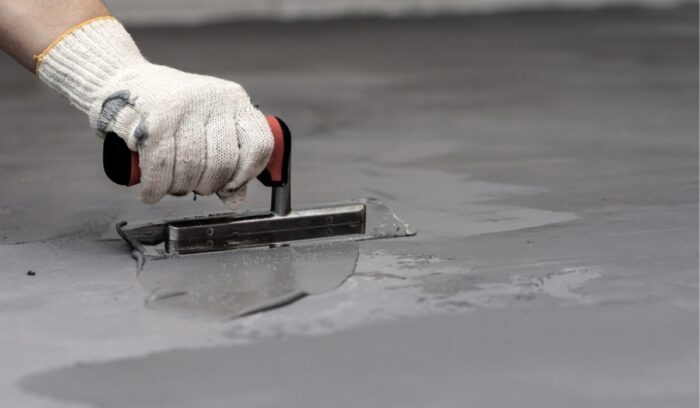
A Beginner’s Guide to Concrete
Concrete is one of the world’s most ubiquitous construction materials, used everywhere from highways to homes.
As with any new building material, concrete can be intimidating at first. This guide will help you gain some background on this common building material – what it is and how to use it effectively.
How it’s made
Basic concrete comprises three ingredients: water, aggregate (such as sand or crushed rock) and cement. A paste made up of both cement and water binds these together, before hardening via chemical reactions known as hydration to form what we know today as concrete.
Making concrete can be a difficult process for homeowners using bagged mix in small residential settings; however, with proper information about concrete making projects can become easier and faster. From setting posts or basketball hoops to creating patio slabs – having all this information at your fingertips will make these DIY jobs go more smoothly.
Properties
Concrete is a strong and resilient building material that grows stronger with age, thanks to the chemical reactions between cement and its constituent materials – stones, sand and gravel – becoming one. This strength stems from cement’s binding capacity hydration process, which bonds small pieces together into one solid mass that eventually hardens over time.
Concrete’s physical properties are determined by combining water, cement and aggregate in various proportions; this allows us to craft various concrete types and applications.
Concrete house slabs Melbourne is one of the world’s most widely used materials. From backyard barbeques to skyscrapers and bridges, it can be found virtually everywhere you look.
RMI’s Concrete Solutions Guide provides an in-depth and practical overview of proven and scalable strategies to lower concrete’s embodied carbon footprint without compromising performance. It is intended to serve all stakeholders involved in its value chain – producers of cement and concrete products as well as developers, designers, contractors, policymakers and more – in an attempt to reduce concrete’s embodied carbon emissions without negatively affecting performance.
Many of these solutions make use of industrial waste products like fly ash and slag (ground granulated blast furnace slag) as part of their cement mix replacement solution.
Mixing it
If you’re hoping to create a concrete walkway, durable countertop, or weather-proof planter in your home, mixing your own batch of concrete is essential. While it takes more effort than pouring pre-mixed concrete into molds, most do-it-yourselfers can tackle it themselves given proper preparation and tools.
Prior to beginning any concrete mix project, first determine how much will be needed. It is always better to overestimate than underestimate this amount as too little materials will limit you from reaching full strength, while too much could create a soupy, weak mixture that fails.
Next, start prepping your mixer by donning gloves and an N95 mask in order to protect yourself from breathing in any dust particles that might be released during mixing concrete. Next, remove your bag of mix from its container, pushing any dry materials out to one side, and removing the dry material bag altogether from its place.
Pouring it
Pouring concrete on either a sidewalk, patio or driveway should be straightforward and uncomplicated. Before commencing installation of your new pavement or tarmac surface, clear out all debris or materials which could obstruct installation of the material.
To quickly level your concrete, drag a long plank of wood (known as a screed board) across its surface after it has been poured and make multiple passes over its surface for even distribution of moisture and thickness of slab. This should create an even and flat slab surface.
Once your concrete has set for several days, use a magnesium hand float to smooth its finish. Do not work on it during rainstorms as water can mix with semi-solid concrete and cause cracking. In addition, avoid de-icing salts as these will corrode its surface – try rock salt as an alternative that provides similar benefits without harming the new surface of concrete.
Curing it
Concrete can be an amazing material to work with for various projects, but it needs to be cured properly for optimal strength. Although this step might seem unnecessary at the time, its effects can have an enormously beneficial impact on how quickly concrete is ready for use.
Curing is simply the process of ensuring that moisture doesn’t evaporate too rapidly from freshly-poured concrete, a crucial task when working with large projects such as patios or driveways. Without adequate curing, drying shrinkage could cause cracks before reaching its full strength; leading to potential damage and costly repairs later. A curing compound provides the best way to mitigate against such issues.
